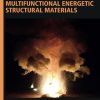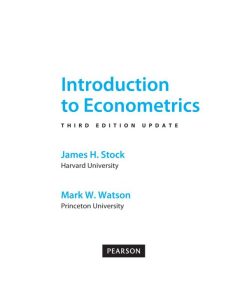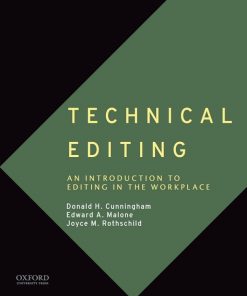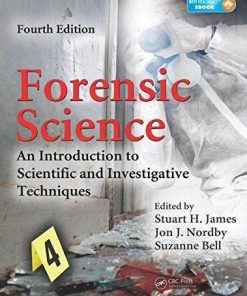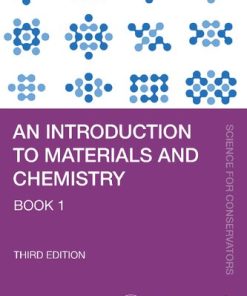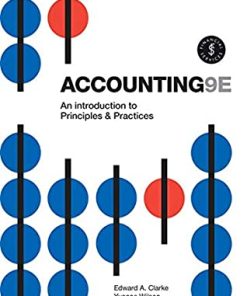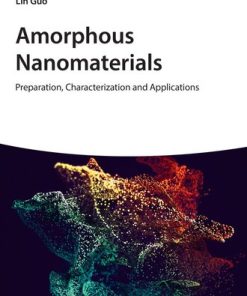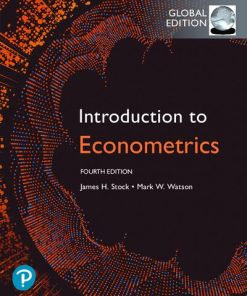An Introduction to Metallic Glasses and Amorphous Metals 1st edition by Zbigniew Stachurski, Gang Wang 0128194197 9780128194195
$50.00 Original price was: $50.00.$25.00Current price is: $25.00.
An Introduction to Metallic Glasses and Amorphous Metals 1st edition by Zbigniew H. Stachurski, Gang Wang – Ebook PDF Instant Download/DeliveryISBN: 0128194197, 9780128194195
Full download An Introduction to Metallic Glasses and Amorphous Metals 1st edition after payment.
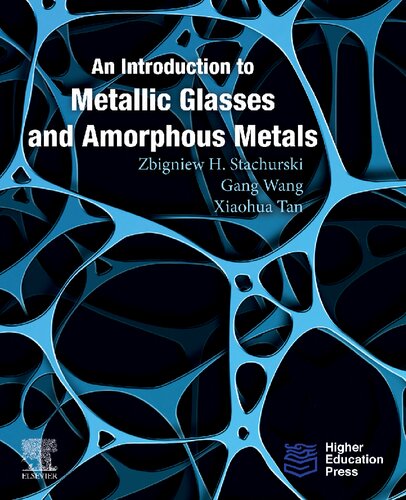
Product details:
ISBN-10 : 0128194197
ISBN-13 : 9780128194195
Author : Zbigniew H. Stachurski, Gang Wang
An Introduction to Metallic Glasses and Amorphous Metals gives a background on the physics of materials, describing relevant experimental techniques. The book presents the necessary background in physics, thermodynamics, and the mechanics of solids, before moving on to cover elasticity, plasticity, fracture and the anelastic behavior of metallic glasses, relating these properties to chemical composition, atomic arrangement, microstructure, and methods of preparation. In addition, it compares the structure-property relationships specific to metallic glasses with polycrystalline metals and alloys and describes the properties and characteristics of metallic glasses. The general features and behavior of metallic glasses are also analyzed and summarized.
An Introduction to Metallic Glasses and Amorphous Metals 1st Table of contents:
Chapter 1: Introduction
Abstract
References
Chapter 2: Making of metallic glasses and applications
Abstract
Subchapter 2.1. Applications of metallic glasses
Subchapter 2.2. Making metallic glasses
Chapter 3: Solidification
Abstract
Subchapter 3.1. Solidification by crystallization
Subchapter 3.2. Solidification of glass
Chapter 4: Characterization of metallic glasses
Abstract
Subchapter 4.1. Glass transition theories
Subchapter 4.2. Mechanical testing
Chapter 5: Models of structure
Abstract
Atomic arrangements in solids
Atoms and their properties
Models of atomic packing in crystals
Models of atomic packing in metallic glasses
Models of micro-structure in metals
References
Chapter 6: Magnetic properties of amorphous metallic alloys
Abstract
Section 1. The history of magnetism
Atomic-scale magnetism
Magnetism of one electron
Magnetism of one atom
Macroscopic-scale magnetism
Diamagnetism and paramagnetism
Ferromagnetism
Section 2. Applications of amorphous alloys
Fabrication techniques
Enhancement of soft magnetic properties
Applications of commercialized Fe-based BMGs
Magnetic behavior of Nd-based amorphous hard magnets
Enhancing the magnetic property by alloying elements
Magneto-caloric bulk amorphous alloys
A brief history of the magneto-caloric effect
Characterization of magneto-caloric materials
Magneto-caloric bulk metallic glasses
Section 3. Outlook of magnetic amorphous alloys
References
Chapter 7: Elasticity of metallic gasses
Abstract
Continuum mechanics
Affine and non-affine deformation
Deformation in bulk metallic glass
Elastic modulus by the X-ray method
Deformation in Zr55Al10Ni5Cu30 metallic glass
Deformation in Zr46.5Cu45Al7Ti1.5 metallic glass
Deformation in Zr64Cu16Ni10Al10 metallic glass under cooling
Deformation in thin film metallic glass
Structural evolution in Zr50Cu50 metallic glass during compression
Structural evolution in Zr64.13Cu15.75Ni10.12Al10 during heating
Changes in atomic structure revealed by radial distribution
References
Chapter 8: Introduction to anelastic deformation
Abstract
Creep
Stress relaxation
Mechanical relaxation and dynamic loss modulus
Time and temperature dependent behavior
Creep of aluminium-based metallic glass
Creep of Zr-based metallic glass
Dynamic relaxation in Fe63Al27 metallic glass
Free-volume anelastic deformation of metallic glasses
The β relaxation in La–Ni–Al metallic glass
Definitions of shear viscosity
References
Chapter 9: Plastic deformation and yield strength of metals
Abstract
Time–temperature deformation maps
Plasticity in metallic glasses
Plastic flow in MGs
Serrated flow at macroscopic level
Serrated flow at microscopic level
Summary and outlook
References
Chapter 10: Fracture mechanics of metallic glasses
Abstract
Fracture strength of an uncracked material
Shear fracture – Coulomb–Mohr theory
Tensile fracture – Griffith’s fracture criterion
Calculation of elastic strain energy
Calculation of crack surface energy
Solution for fracture stress
Fracture toughness
Limits of applicability of Eq. (10.24)
Irwin fracture criterion
Fatigue and fracture of metallic glasses
Dependence of strength on sample size
Instability and morphology of fracture
References
Appendix A: Thermodynamics of a system
Molecular system
Enthalpy
Entropy
Forces between atoms, molecules, and particles
Types of physical forces
Interatomic forces
Lennard-Jones interatomic potential
Buckingham potential
Morse potential
Many-atom potential
Stillinger–Weber potential
Embedded atom model potential
Gibbs free energy
Liquid-to-solid phase transformation
Computation of cluster potential
People also search for An Introduction to Metallic Glasses and Amorphous Metals 1st:
introduction to metallic glasses
metallic glass examples
what is metallic glass used for
introduction to glass science and technology pdf
metallic glasses examples
Tags: An Introduction, Metallic Glasses, Amorphous Metals, Zbigniew Stachurski, Gang Wang
You may also like…
Business & Economics - Mathematical Economics
Reference - Writing
Technical Editing: An Introduction to Editing in the Workplace 1st Edition
Engineering - Industrial Engineering & Materials Science
An Introduction to Materials and Chemistry: Book 1 (Science for Conservators) 3rd Edition
Business & Economics - Accounting
Accounting: An Introduction to Principles and Practice Edward Clarke
Engineering
Amorphous Nanomaterials: Preparation, Characterization and Applications 1st Edition Lin Guo
Business & Economics - Mathematical Economics


